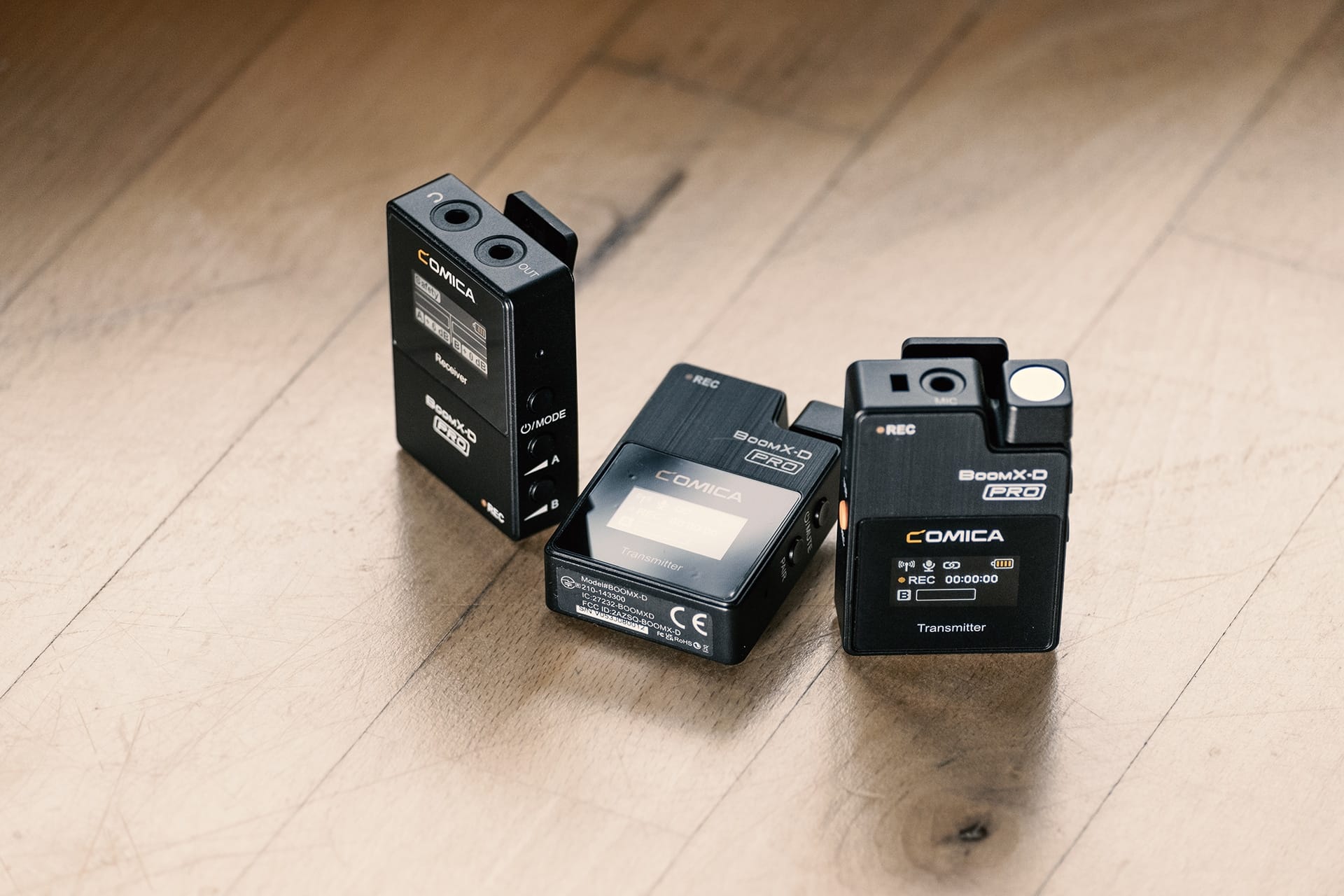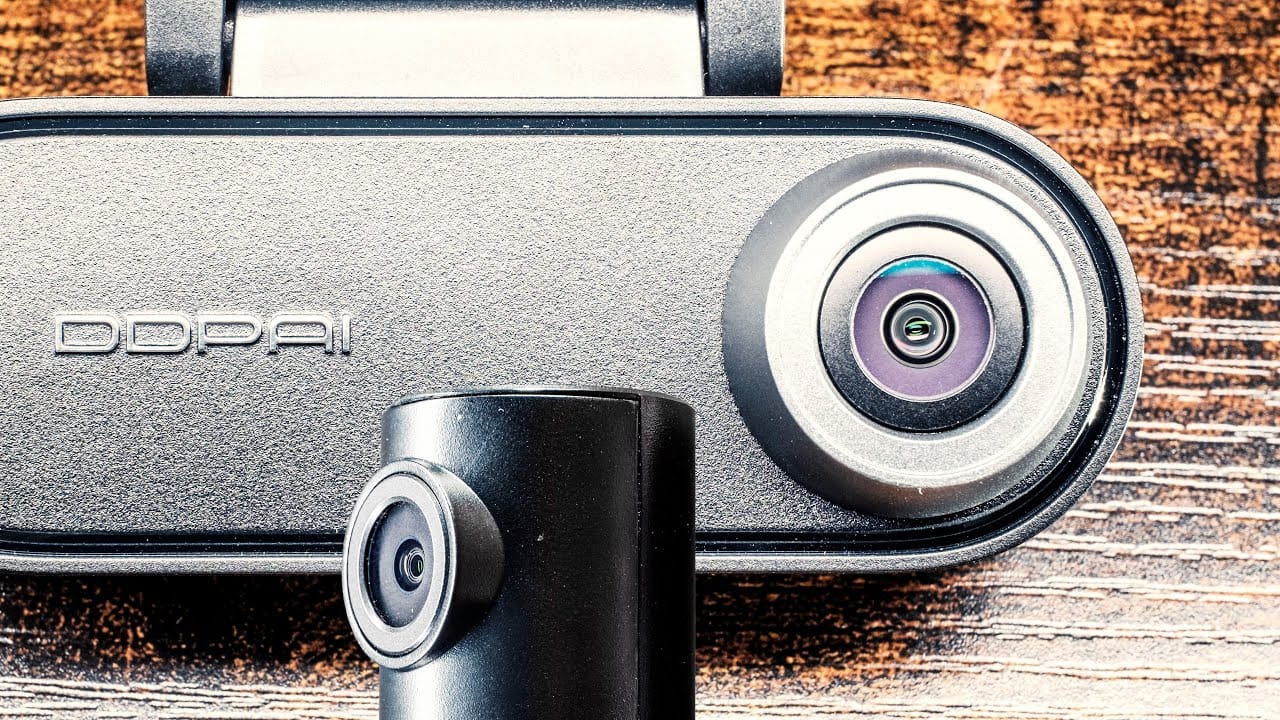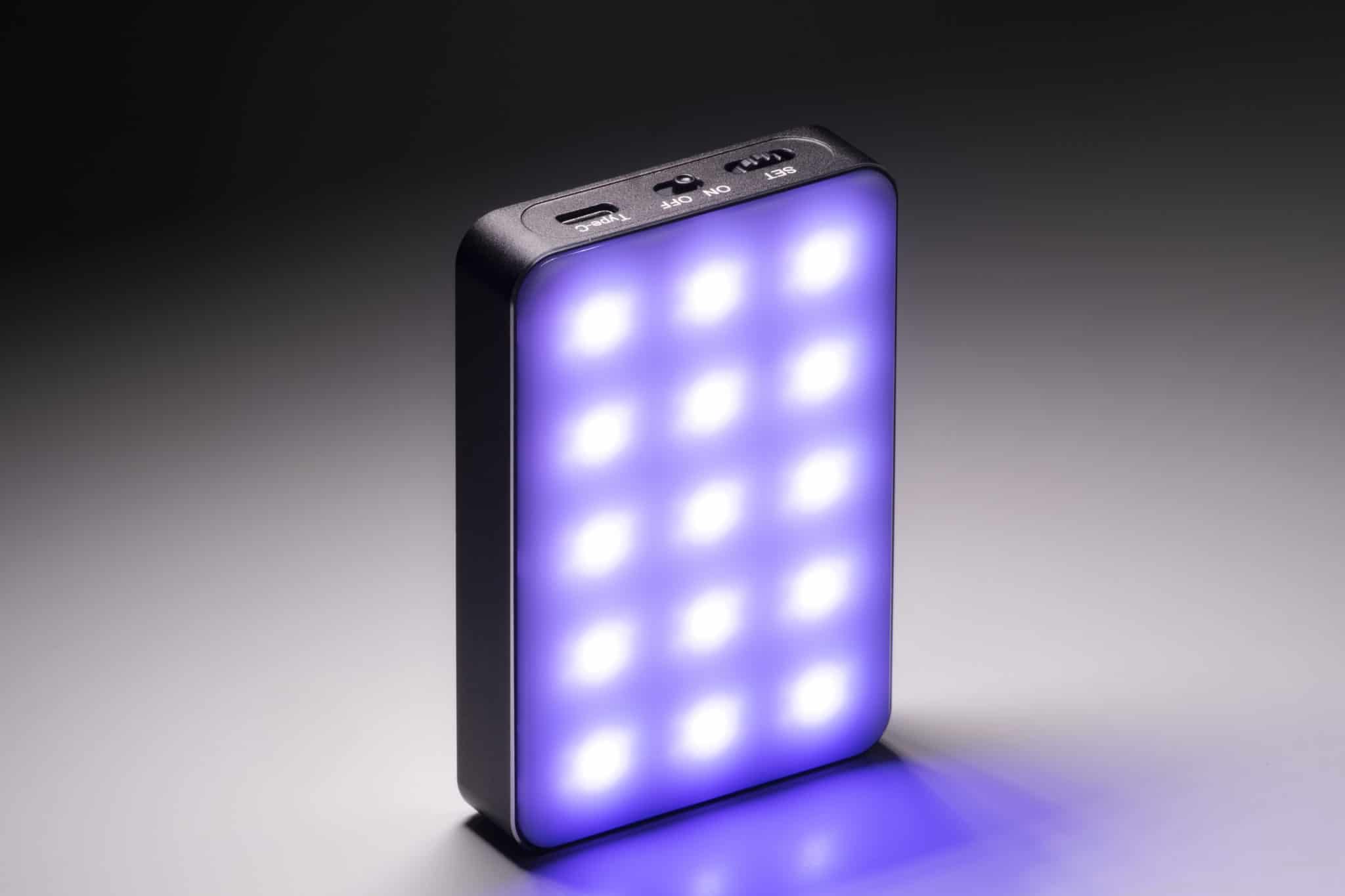You’ve probably seen small wireless clip-on mics like these before. They’re compact, easy to use and affordable. But if the microphone is too far away from the receiver the audio signal will get cut off or completely lost, which means no sound at all. This is where this microphone comes in to play. It has an internal storage that saves the recording too which means you could also use the microphone as an audio recorder.
You can watch the 8-minute video review below featuring all important test and settings:
Internal recording
Over the past two years we have tested and reviewed quite a few wireless microphones and you may ask yourself: Why another one? What’s the big difference?
There are a couple of features that similar devices don’t have. First of the internal recording feature.
The Comica BoomX-D Pro consists of three devices: The two transmitter microphones and the receiver that is connected to the camera.
The transmitters each have an 8GB internal storage that can save up to 24 hours of audio recordings, according to the manufacturer. This is a big deal not just to have a back up in case there is interference with one of the devices and the audio in-camera is not usable but also to avoid range issues. The BoomX-D Pro mics have a range of around 50m but only in a clear line of sight. So in crowded places or in offices with lots of walls and objects the range will be much shorter. This is where the internal recording of the transmitters comes in to play.
There’s an orange button on the left side that can be pressed to record the audio. It needs to be pressed for two seconds to start or stop which is good to avoid accidental recordings.
On the transmitters’ screen a “REC” logo will start flashing and a timecode starts running.
Since there’s also a “REC” logo on the upper front of the transmitters I first assumed a light would start flashing but it’s just imprinted text.
The audio files can be transferred via USB-C and are saved as WAVE file with 48kHz and 16bit.
Being able to record internally turns the transmitter microphone into recorder. Because technically no other device is needed if you simply want to record some audio. You can plug in any type of microphone with a 3.5mm connection and record audio.
Would a Micro SD card be a better option? I think having internal storage is fine and means less fiddling around with cards. Just be aware that once the storage is full the device will delete files and simply record over those files.
Safety channel
Another useful feature is the safety channel that sets one channel -6dB lower than normal. Which means if you set the microphone to +5dB the safety channel will be -1dB. This can be helpful if audio levels are often changing to avoid clipping. Just be aware that this is a mono setting only because it’s just one channel at different volumes. In post-production you can then decide whether to use the left or the right track.
External lavalier
While you can certainly attach the transmitter microphone to your shirt or jacket, the more professional way is to use the included lavalier microphones. The 3.5mm connector can be plugged in to the top of the transmitter. Compared to other lavaliers these are rather big even without the wind foam. But the most important thing is of course the sound and audio quality which is rather good.
Menu & settings
Turning the devices on takes less than 2 seconds which is a good time. All three devices have a screen that dims after 30 seconds but doesn’t completely turn off. When changing settings any button needs to be pressed first to activate the screen. The screens are bright and text and icons are easy to read.
The transmitter screen has quite a few settings displayed. There’s a symbol to show the signal strength, a “mute” button on the side can be pressed to mute the transmitter. Next to the mute symbol is the pairing symbol that indicates whether the devices are connected or not. If the devices don’t connect you can press the “pair” button on the side of the transmitter. The battery icon has four orange bars to indicate the remaining battery life.
The receiver has a more simplistic menu that displays which mode is being used. By pressing the “mode” button on the right side multiple times it switches between, mono, stereo and safety channel.
The audio levels are being displayed on the bottom of the screen. They can be adjusted on the side by pressing “A” or “B” depending on which mode you are using and whether you are using one or two microphones. The levels go from +0dB to +12dB in single steps. If safey mode is being used one channel can go to -6dB but not in the other modes.
In mono mode both transmitter signals are mixed in to one track which means if you change only the audio levels of one microphone, both will change. If you want to manually change each mics audio levels make sure to use the stereo mode.
The battery life is around 4 hours which is okay but I recommend always having a power bank on set to be on the safe side. The devices can be charged via USB-C with the included 3-in-1 cable that charges all three devices at the same time.
Ergonomics
Like most other clip-on mics the BoomX-D Pro is made from plastic which means you have to treat it carefully but it also means that the three devices are lightweight.
The unusual design of the microphone being separated from the rest of the transmitter is also an advantage because it’s clear where the audio is being recorded. The push-on dead-cat is well designed and fits perfectly on to the mic. What Comica should certainly improve is the design and size of the lavalier microphone. It’s simply too big and doesn’t look discrete which probably isn’t an issue for most content creators but can look a bit funny when using it on corporate productions.
For whom is the BoomX-D Pro?
The BoomX-D Pro can be used with DSLRs or mirrorless cameras but also with phones and Comica also includes all the necessary cables. But I personally think that this would be almost too professional be used with a smartphone and not affordable enough. Priced at around $269 it isn’t the cheapest option on the market but it also isn’t overpriced.
For half the price you can already get the SYNCO G2 that is similar to the Comica. But what it doesn’t have is the safety track and the internal recording. I think these two features are the biggest reasons to get this kit and I think there are worth it if you are looking for a professional and reliable option.


